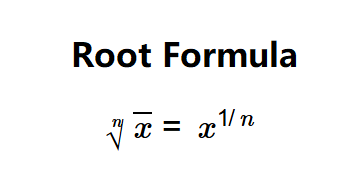 Home
Home
 Back
Back

Definition: This calculator computes the nth root of a number, such as square roots (\( n=2 \)), cube roots (\( n=3 \)), and higher-order roots. It handles both positive and negative numbers, returning real roots where possible or indicating if the result is imaginary.
Purpose: It helps users calculate roots of numbers, useful in algebra, geometry, and other mathematical applications, while also handling cases where the result may be imaginary.
The calculator computes the nth root using the following approach:
It handles:
Steps:
Roots are important for:
Example 1 (Square Root): Find the square root of 16:
Example 2 (Cube Root of Negative Number): Find the cube root of -27:
Q: Why does the calculator show imaginary results for some inputs?
A: For even-degree roots of negative numbers (e.g., \( \sqrt{-4} \)), the result is not a real number but an imaginary number, as real roots do not exist in these cases.
Q: How does the calculator handle negative numbers?
A: For odd-degree roots, it computes the real root (e.g., \( \sqrt[3]{-8} = -2 \)). For even-degree roots, it indicates the result is imaginary.
Q: Why is the degree restricted to positive integers?
A: The nth root is defined for positive integer degrees in this context to ensure meaningful and standard mathematical results.